Sake from the Frozen North - Day 4, Urakasumi, Shiogama Fish Market and the Shinto shrine
POSTED ON 31/03/2015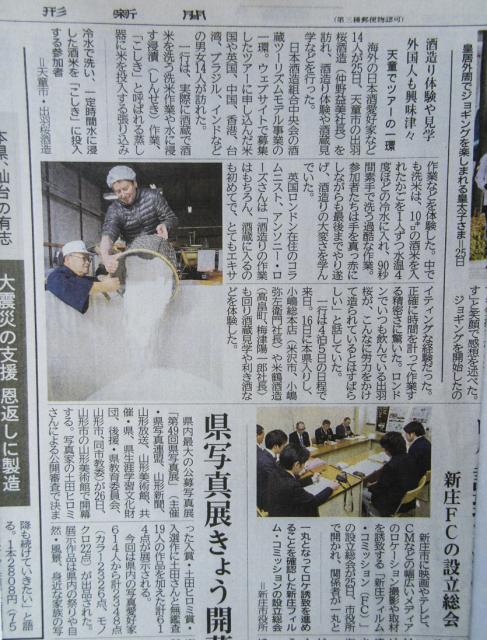 Yamagata Shinbun
Yamagata Shinbun
Yesterday’s rice washing had been great fun, if not for the brewery, and because allowing a group in and involving them in one of the sake-making processes was so exceptional, the story was reported in the Yamagata Shinbun the next day http://yamagata-np.jp/news/201502/25/kj_2015022500523.php. Fortunately my blushes were spared as the photo that accompanied the news story was not the one of me tipping rice into the wrong container but into the rice steamer.
After checking out of the Rurikura Resort, Zao Onsen, we crossed from Yamagata to Miyagi Prefecture on our way to our first stop and lunch spot, the Shiogama Wholesale Fish Market. Good news: we were told that Shiogama has the most sushi restaurants per capita in Japan and the local sushi chefs buy their fish from the ‘Tsukiji of Tohoku’.
With a variety of ‘catches of the day’ along with local oysters, crab, sea urchin, prawns, shirako (cod's sperm sac), octopus, belly tuna, anago (eel), clams, cod’s roe, salmon roe, this was as close to seafood heaven as I’ll get. You could choose your shellfish and / or salmon and / or cod’s roe and either sit and eat it sashimi style, or take it to a small grill outside where it’s cooked for you over a small grill.
My eyes were considerably larger than my stomach. I ambled up and down the aisles of the market picking out oysters, salmon roe, cod’s roe, cod’s, sea urchin and clams. I asked for my clams to be cooked on the grill to go with the rice and miso ordered by Etsuko.
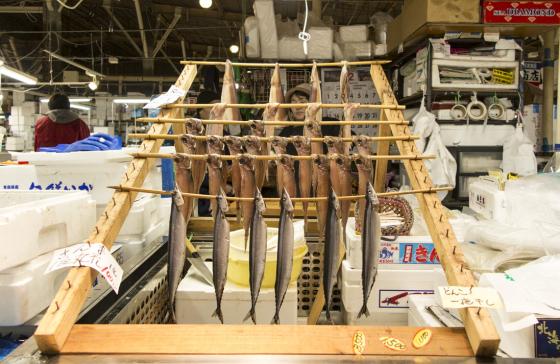 hung out to dry
hung out to dry
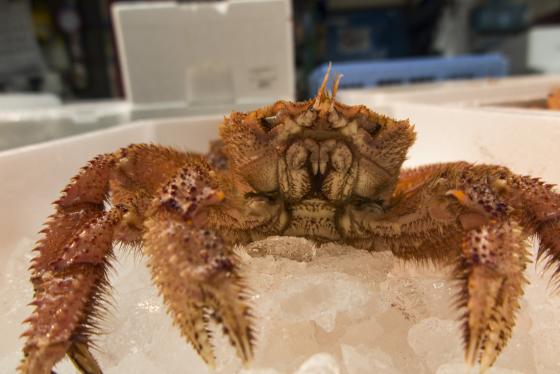 crab chilling
crab chilling
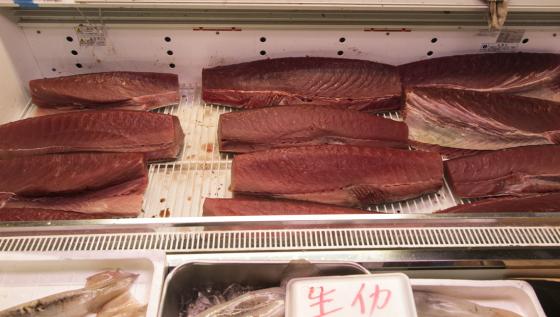 tuna sahimi
tuna sahimi
Although we were all in need of a lie-down after collectively pigging out on shellfish fest, duly washed down with sake of course, we had work to do, first by way of a visit to the Shiogama shrine, and then to one of Miyagi’s shrines of sake itself, Urakasumi.
At the Shiogama shrine, our group was treated to a private ceremony as guests of Urakasumi, which makes a special sake for the shrine. As Etsuko explained, sake is often tied to shrines and Shinto ceremonies. This was a private ceremony inside one of the shrines, no photographs allowed, with priests chanting, intoning and playing drum and strings as two young girls danced and rattled tambourine-like instruments in a sonorous invocation to the Shinto deities.
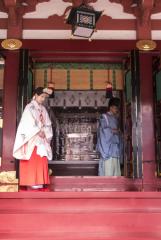 Shiogama shrine
Shiogama shrine
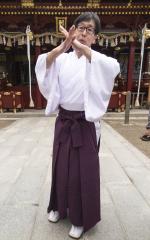 Shiogama priest
Shiogama priest
After a purifying white paper broom was shaken over us like a magic wand, we were then wished good luck and safe travels with a communion-style cup of soul-purifying, and, in the circumstances, stomach-settling, sacred Omiki sake from Urakasumi. Spiritually revived, we made out final sake brewery visit of the tour, to Urakasumi (http://www.urakasumi.com/hpa/english.html).
Of all our visits, this was the most emotionally charged because Urakasumi (meaning ‘Cloudy Bay’) and the surrounding area was badly affected by the tsunami which stuck the Pacific Coast on March 11th, 2011 to devastating effect. One kilometre from the bay, buildings were badly damaged by the surge of water which rose to two metres at the brewery.
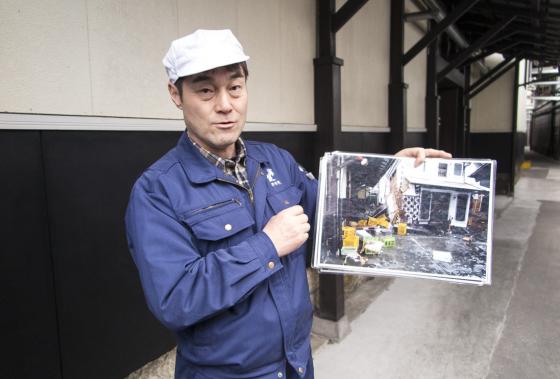 The tsunami damage
The tsunami damage
A number of machines and some of the brewery equipment suffered water damage with 30,000 bottles of maturing sake shattered. Although it had been ‘like a war zone’ in the words of Etsuko, who had come to the area shortly after the disaster to help out as a volunteer, recovery was rapid and within six months Urakasumi was almost back to normal. Most importantly for this traditional family brewery established 280 years ago, brewing started again for the 2011 year.
With the head of the brewery, Koichi Saura, we had an enlightening visit as he explained Urakasumi’s style as ‘classic and elegant with good umami balance’. He stressed that Urakasumi prides itself on its regional expression, sourcing almost all its rice from Miyagi, with some Yamadanishiki from Hyogo. It also has its own cultivated house yeast registered as Kyokai No. 12 by the Brewing Society of Japan in 1986 for its superior ginjo grade potential, along with purified water from the city.
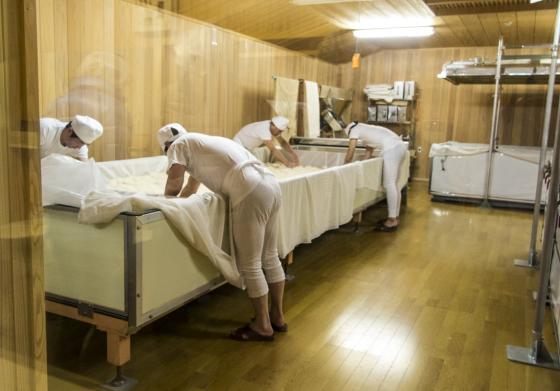 In the koji room
In the koji room
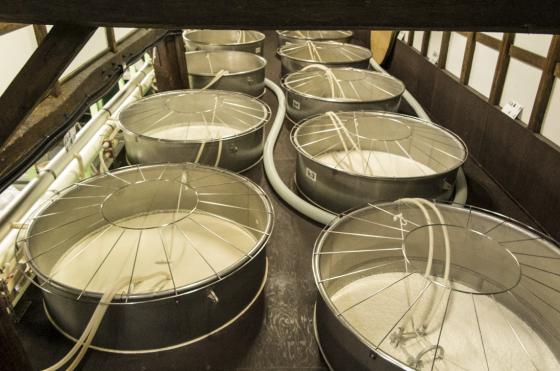 Sake fermenting
Sake fermenting
By now the brewery tour was becoming familiar but no less absorbing, with frequent slipper changes and handwashing and donning of hairnets as we observed the rice milling and washing, then steaming and cooling before transfer of a proportion of the rice to the koji room in preparation for the fermentation. It was followed by a sit-down sake tasting with the following sakes:
Urakasumi Junmai
Urakasumi Junmai Ginjo Zen (fabulous: an absolute favourite)
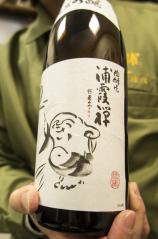 Urakasumi Zen
Urakasumi Zen
Urakasumi Yamadanishiki Junmai Daiginjo
Urakasumi Shiboritate Tokubetsu Junmai Namazake
After the tasting, we checked into Komatsukan Kofutei, a characterfully traditional Japanese-style ryokan with tatami mats and hot and cold onsen springs overlooking Matsushima Bay. It was one of the most naturally beautiful settings I have ever experienced.
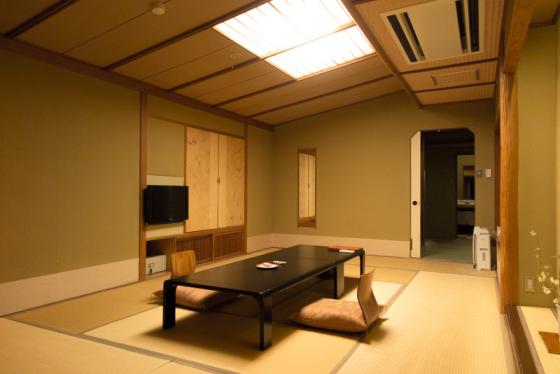 Komatsukan Kofutei Ryokan
Komatsukan Kofutei Ryokan
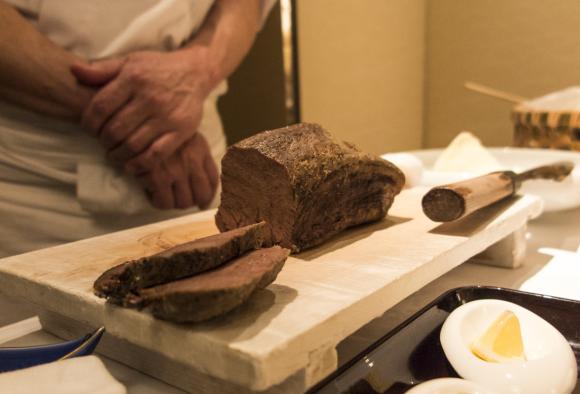 unencrusted tongue
unencrusted tongue
Koichi Saura, incongruously the only person at the table not dressed in traditional Japanese dress., hosted our last supper. With tongue baked beneath a solid crust a highlight, it was a fine kaiseki style dinner accompanied by a variety of Urakasumi sakes. No doubt moved not just by the sake, but by the hugely enjoyable experiences we had all shared over the past few days, impassioned and heartfelt speeches were made about our love of sake and new friends made. Thanks were given to Etsoko Nakamura for her calm and patient stewarding and to Mr. Saura for his warm hospitality.
After dinner, reluctant to go to bed, we repaired to the atmospherically-lit foot onsen on the terrace overlooking the ocean, and dangled feet in the warm, welcoming hot spring water, sake ochoko, needless to say, clutched firmly in hand.
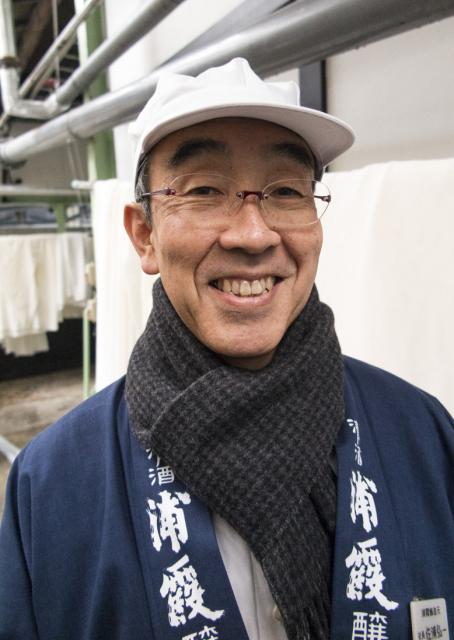 Koichi Saura
Koichi Saura

